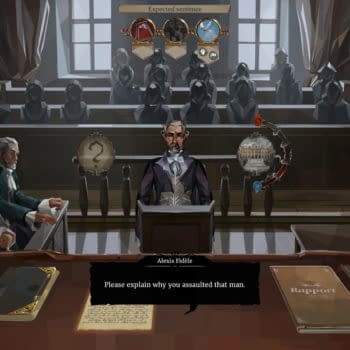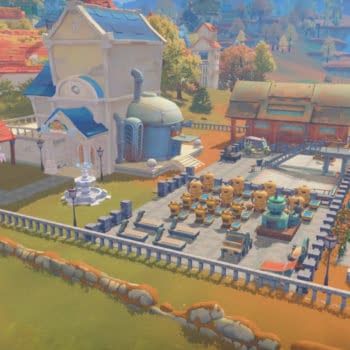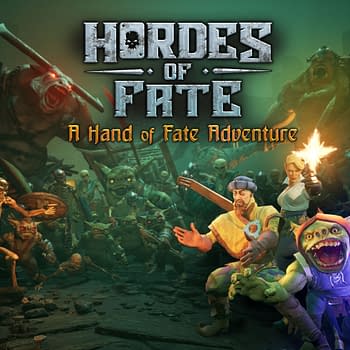Posted in: Games, Review, Video Games | Tagged: game review, LKA, LKA studio, PS4, The Town of Light, Wired Productions, xbox one
The Town Of Light Is A Hauntingly Beautiful Psychological Horror Story
If you're in need of another reason to lose all faith in humanity as a whole, I can direct you to no better a game than The Town of Light. Developed by LKA and produced by Wired Productions, the psychological thriller game made the jump to consoles recently and is absolutely one of the best narrative games I've played. You take control of a young, nameless, woman in the present day who is wandering around the remains of the Volterra Lunatic Asylum in Tuscany. Through the games use of diary entries, flashbacks, still art, and puzzles it becomes obvious that the player you are controlling has a deep connection to the asylum. Now, who exactly you are and what your connection to Volterra is, are left entirely up to the player.
The real story comes through the diary entries, flashbacks, medical records, found items, graffiti, and random interrogatory sequences with yourself. The real protagonist of The Town of Light is a young Italian woman named Renee who was admitted to the hospital in the late 1930s and remained there through WWII. While Renee's story is fictional, Volterra Lunatic Asylum is not. Which adds an incredibly eerie aspect to playing the game, as you are walking around the crumbling ruins of an actual asylum. If you look into the history of the Ospedale Psichiatrico di Volterra, you'll find that the hospital was shut down due to the particularly cruel treatment of its patients which included things like placing patients in tanks of ice, using insulin to induce comas, and good old fashioned medical experimentation. And going back to Volterra in from 1938-1944, an era when electroshock therapy and lobotomies were still in fashion, that should give you some clues as to what you should be expecting going into the game.
Renee's tale is a compelling one, in the way that stories of women put through absolute hell are always compelling for me. It's something like three parts morbid curiosity, five parts empathy, and two parts masochism because we know how these stories end. The tale includes references to repeated sexual violence, which are handled relatively deftly by the development team. Renee may be a victim of some terrible crimes, but she is always treated with, if not respect, than compassion by the game itself. Granted, you do have the option to tell her that she deserved what she got, but the gameplay puts you in Renee's position during many of the worst experiences in her life. It would be a bit hard to go with those dialogue options, if you ask me.
The horror in this game is almost entirely situational. There are maybe two moments that might end in jump scares, the rest of the game is just eerie. There's nothing jumping out at you, no literal monsters in the dark, and you just might want to sit in the pitch black every now and again.
The inclusion of graffiti here at Volterra is an interesting one, in the game it's a look into Renee's understanding of the world around herself. But the real-life Ospitale is known for the "brut art" graffiti of one former inmate. Oreste Fernando Nannetti, who often signed his work as NOF4, dug into the plaster of the Ferri building with a buckle from his uniform in order to record everything from his own life and crimes, as well as works of science fiction.
Outside of Renee's haunting tale of personal tragedy, the gameplay mechanics are incredibly simple. You walk around an abandoned mental facility with a flashlight and the ability to pick up only certain objects. While you collect diary pieces and reports about Renee's life and the general functioning of the hospital, the ruins are filled with books, letters, and medical journals. Most of which you cannot interact with. And since the interact button is just a slight change in the focus target reticle, it can be rather tricky to figure out what you can and cannot pick up. Personally, I went with the plan of trying to select everything so I wouldn't miss parts of the story, but that's not ideal for most players.
The graphics aren't the greatest either, with many of the textures being rather painful to look at, and some of the dialogue is given to us with white text overlaid on off-white paper, which is a terrible stylistic choice. Because then nothing is readable.
While controlling Renee in flashbacks you have to content with some wonky physics, waving backgrounds, and blinding lights. It gives you a great glimpse into what its like to be a questionably sane woman in a mental hospital circa 1942, if nothing else. But being in control of Renee at these moments, many of which end in terrible ways, really does make you take a long look at your life.
Naturally, the game does have a few cliches. The first is an inordinate amount of long hallway sequences, the second is the inclusion of a creeepy, decaying doll. But, the worst thing in the game has to be the damn elevator. My advice? Only take it when you have to.
But if you can get across some rather decent gameplay hurdles and actually sit down with say, 5 spare hours, to play the game, it is absolutely worth it. The Town of Light is a hauntingly beautiful psychological horror story, and you don't want to overlook it.










![[REVIEW] "Gang Beasts" is Zany Party Madness](https://mlpnk72yciwc.i.optimole.com/cqhiHLc.IIZS~2ef73/w:350/h:350/q:75/rt:fill/g:ce/https://bleedingcool.com/wp-content/uploads/2019/09/gang-beasts-7-350x350.jpg)




![[REVIEW] "Divinity: Original Sin II" Definitive Edition is Almost Perfect](https://mlpnk72yciwc.i.optimole.com/cqhiHLc.IIZS~2ef73/w:350/h:350/q:75/rt:fill/g:ce/https://bleedingcool.com/wp-content/uploads/2018/08/Divinity-Original-Sin-2-Definitive-Edition-art-350x350.jpg)





